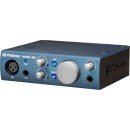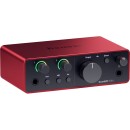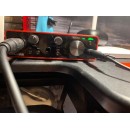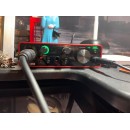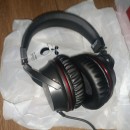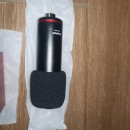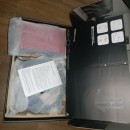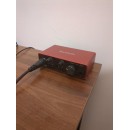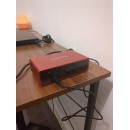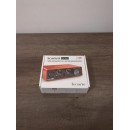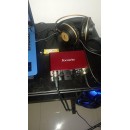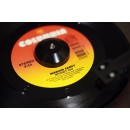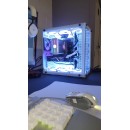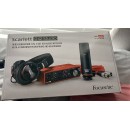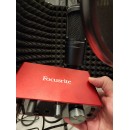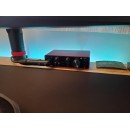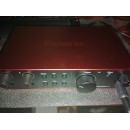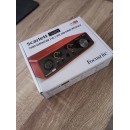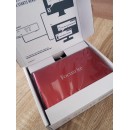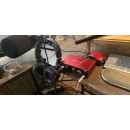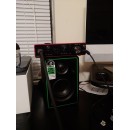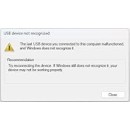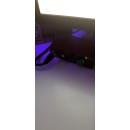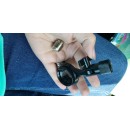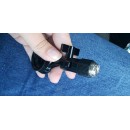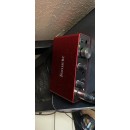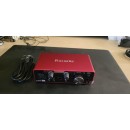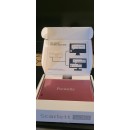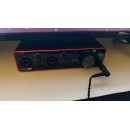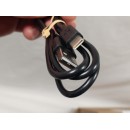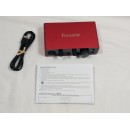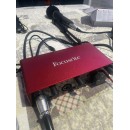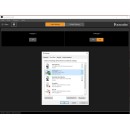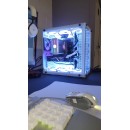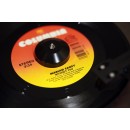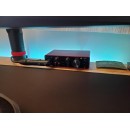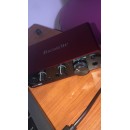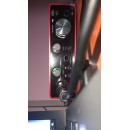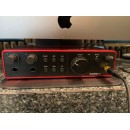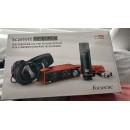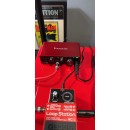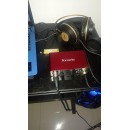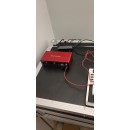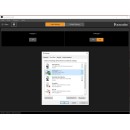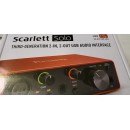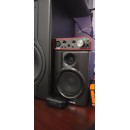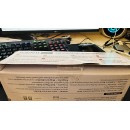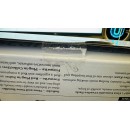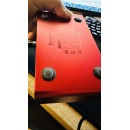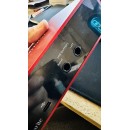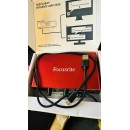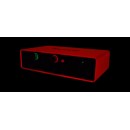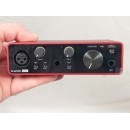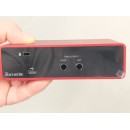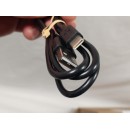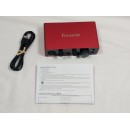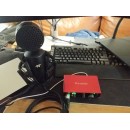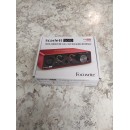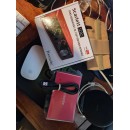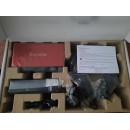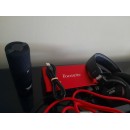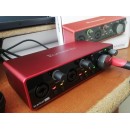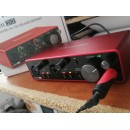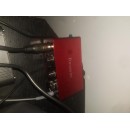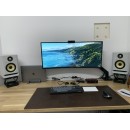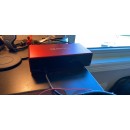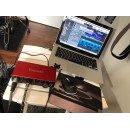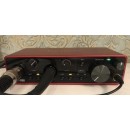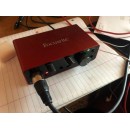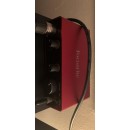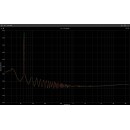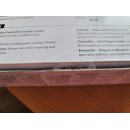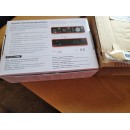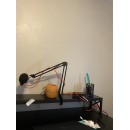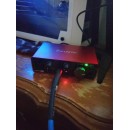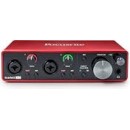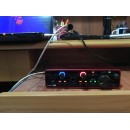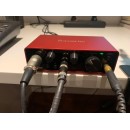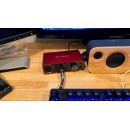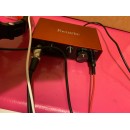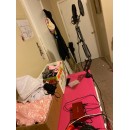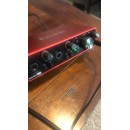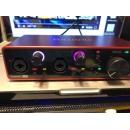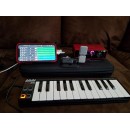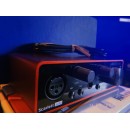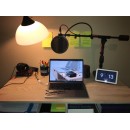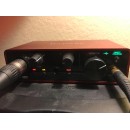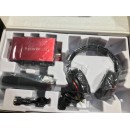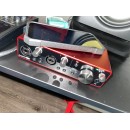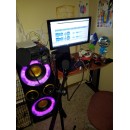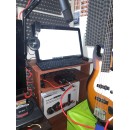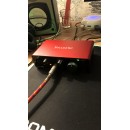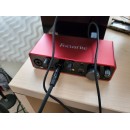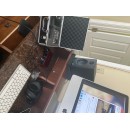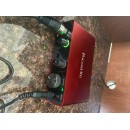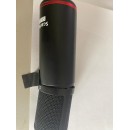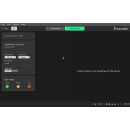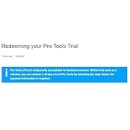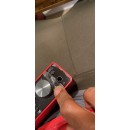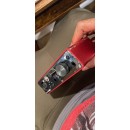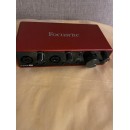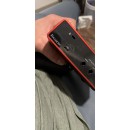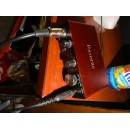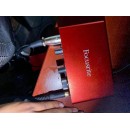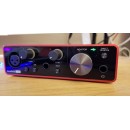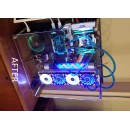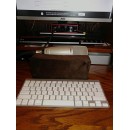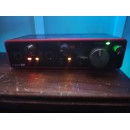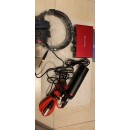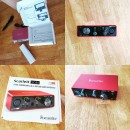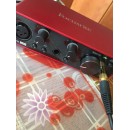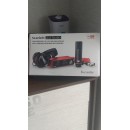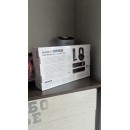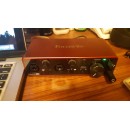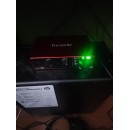PreSonus AudioBox iOne vs Focusrite Scarlett Solo: A Detailed Comparison
The PreSonus AudioBox iOne USB 2.0 & iPad Recording Interface is a versatile tool designed for musicians and podcasters who need a reliable and straightforward interface for both their computers and iPads. It features a single mic preamp and an instrument input, making it ideal for solo performers or small recording setups. The iOne supports 24-bit audio at up to 96 kHz, ensuring high-quality sound capture. Its compact design and USB 2.0 connectivity make it an excellent choice for mobile recording. Additionally, its compatibility with iPads offers flexibility for users who prefer iOS devices for their music production tasks.
In contrast, the Focusrite Scarlett Solo USB-C Audio Interface (4th Generation) delivers a more modern approach with its USB-C connectivity, providing faster data transfer rates and improved power efficiency. The Scarlett Solo also features a single mic preamp and an instrument input, similar to the AudioBox iOne, but it builds on the reputation of the Scarlett series, known for its high-quality preamps and low-latency performance. The 4th Generation model introduces enhanced AD/DA converters, supporting up to 24-bit/192 kHz resolution, which caters to those who seek pristine audio fidelity.
While both interfaces are tailored for solo artists and offer similar input configurations, the Scarlett Solo's newer generation technology and enhanced audio resolution may appeal to users seeking the latest advancements in audio interface technology. On the other hand, the AudioBox iOne's iPad compatibility offers unique advantages for those who prefer integrating their iOS devices into their workflows. Ultimately, the choice between these two interfaces will depend on the user's specific needs, whether they prioritize cutting-edge features and connectivity or versatile device compatibility.
In the following sections, we will dive into a detailed comparison of the PreSonus AudioBox iOne USB 2.0 & iPad Recording Interface and the Focusrite Scarlett Solo USB-C Audio Interface (4th Generation). This comprehensive analysis will cover each product's specifications, highlight their unique advantages, and discuss any potential disadvantages, providing a complete overview to help you make the best choice for your recording needs.
Specifications, Advantages, and Disadvantages of PreSonus AudioBox iOne and Focusrite Scarlett Solo
| User Rating Based on Analysis of Reviews | |
|---|---|
|
Show More |
| Pros: | |
|---|---|
|
|
| Cons: | |
|---|---|
|
|
| Key Specs | |
|---|---|
| Channels of I/O | |
| 2 Input / 4 Output |
Analog: 2 Inputs / 2 Outputs at 192 kHz |
| Maximum Sampling Rate | |
| 48 kHz / 24-Bit | 192 kHz / 24-Bit |
| Number of Microphone Inputs | |
| 1 Preamp | 1 |
| Analog Audio I/O | |
| 1x XLR 3-Pin Mic Input 1x 1/4" TS Hi-Z Input 2x 1/4" TRS Balanced Monitor Output 1x 1/4" TRS Headphone Output |
1x XLR 3-Pin Balanced Mic Input 1x 1/4" TS Unbalanced Line/Hi-Z Input (Front Panel) 2x 1/4" TRS Balanced Monitor Output 1x 1/4" TRS Headphone Output (Front Panel) |
| Host Connection | |
| 1x USB-A 1x USB-B |
1x USB-C |
| OS Compatibility | |
| macOS 10.13 (64-Bit Only) Windows 10 (64-Bit Only) 9 or Later |
macOS Windows |
| Power Requirements | |
| USB Bus Power | USB Bus Power, USB Power Adapter (Not Included) |
The PreSonus AudioBox iOne and the Focusrite Scarlett Solo are both compact audio interfaces designed for recording, but they differ significantly in terms of specifications and capabilities. The PreSonus AudioBox iOne features a 2 Input / 4 Output configuration with a maximum sampling rate of 48 kHz / 24-Bit, making it suitable for basic recording needs. In contrast, the Focusrite Scarlett Solo offers a more advanced 2 Inputs / 2 Outputs setup with a much higher maximum sampling rate of 192 kHz / 24-Bit, providing enhanced audio quality for professional recordings.Show More
When it comes to microphone inputs, both interfaces include 1 Microphone Preamp. However, the PreSonus AudioBox iOne has an XLR 3-Pin Mic Input and a 1/4" TS Hi-Z Input, while the Focusrite Scarlett Solo also offers an XLR 3-Pin Balanced Mic Input and a 1/4" TS Unbalanced Line/Hi-Z Input. This allows both interfaces to cater to various recording scenarios, but the Focusrite's balanced input may provide better noise performance.
In the realm of connectivity, the PreSonus AudioBox iOne features 1x USB-A and 1x USB-B connections, while the Focusrite Scarlett Solo uses a more modern USB-C connection, which may offer faster data transfer rates and better compatibility with newer devices. Both interfaces are compatible with macOS and Windows, although the PreSonus has specific OS version requirements.
Finally, both devices are powered via USB Bus Power, ensuring ease of use without the need for external power sources. However, the Focusrite Scarlett Solo does have the option for an USB Power Adapter (Not Included), which can be beneficial in certain setups. Overall, while both interfaces serve the purpose of recording, the Focusrite Scarlett Solo stands out with its higher sampling rate and more modern connection options.
| General | |
|---|---|
| Channels of I/O | |
| 2 Input / 4 Output |
Analog: 2 Inputs / 2 Outputs at 192 kHz |
| Built-In DSP | |
| Maximum Sampling Rate | |
| 48 kHz / 24-Bit | 192 kHz / 24-Bit |
| Number of Microphone Inputs | |
| 1 Preamp | 1 |
The PreSonus AudioBox iOne USB 2.0 & iPad Recording Interface features a 2 Input / 4 Output configuration, making it suitable for basic recording needs. It is designed for use with both USB and iPad, providing flexibility for mobile recording. The interface supports a maximum sampling rate of 48 kHz / 24-Bit and comes with 1 Microphone Preamp, catering to solo artists and podcasters who require a simple yet effective solution for capturing audio.Show More
In contrast, the Focusrite Scarlett Solo USB-C Audio Interface (4th Generation) offers a more advanced Analog: 2 Inputs / 2 Outputs setup, allowing for higher quality recordings. This interface boasts a maximum sampling rate of 192 kHz / 24-Bit, significantly enhancing audio fidelity and detail. Like the PreSonus, it has 1 Microphone Input, but it also includes an Input Level Adjustment via a 2x Knob, giving users greater control over their sound levels.
Both interfaces do not include built-in DSP and lack expansion slots, which keeps them straightforward in terms of functionality. However, the Scarlett Solo stands out with its higher sampling rate, making it a better choice for those who prioritize audio quality in their recordings. Ultimately, the choice between these two interfaces depends on the user's specific recording needs and whether they prefer portability or enhanced sound fidelity.
| Signal Processing | |
|---|---|
| Gain/Trim Range | |
| 0 dB to 52 dB |
Mic/Line Inputs: Up to +69 dB Hi-Z Inputs: 62 dB |
The PreSonus AudioBox iOne and the Focusrite Scarlett Solo are both popular audio interfaces designed for recording on USB and iPad devices, but they differ significantly in their features. The PreSonus AudioBox iOne does not include a pad functionality, which may limit its versatility for capturing louder sound sources. Its gain/trim range is between 0 dB to 52 dB, which is relatively modest compared to its competitor.Show More
In contrast, the Focusrite Scarlett Solo offers a more impressive gain/trim range, with Mic/Line Inputs providing up to +69 dB and Hi-Z inputs offering 62 dB. This wider range allows for better handling of various sound sources, making it suitable for a broader range of recording situations. Additionally, the Scarlett Solo provides more advanced features like a high-pass filter and solo/mute functionality, enhancing its usability for detailed recording work.
Overall, while both interfaces serve as effective tools for audio recording, the Focusrite Scarlett Solo stands out with its superior gain range and additional features, making it a more versatile choice for musicians and audio engineers. The PreSonus AudioBox iOne, while still functional, may be better suited for simpler recording tasks.
| Connectivity | |
|---|---|
| Analog Audio I/O | |
| 1x XLR 3-Pin Mic Input 1x 1/4" TS Hi-Z Input 2x 1/4" TRS Balanced Monitor Output 1x 1/4" TRS Headphone Output |
1x XLR 3-Pin Balanced Mic Input 1x 1/4" TS Unbalanced Line/Hi-Z Input (Front Panel) 2x 1/4" TRS Balanced Monitor Output 1x 1/4" TRS Headphone Output (Front Panel) |
| Phantom Power | |
| 48 V | 48 V, Selectable On/Off |
| Digital Audio I/O | |
| Host Connection | |
| 1x USB-A 1x USB-B |
1x USB-C |
| Host Connection Protocol | |
| USB 2.0 | USB 2.0 |
| USB (Non-Host) | |
| Sync I/O | |
| Network I/O | |
| MIDI I/O | |
The PreSonus AudioBox iOne and the Focusrite Scarlett Solo are both compact USB audio interfaces designed for musicians and podcasters. The PreSonus AudioBox iOne boasts a 1x XLR 3-Pin Mic Input and a 1x 1/4" TS Hi-Z Input, making it versatile for recording vocals and instruments. It also features 2x 1/4" TRS Balanced Monitor Outputs and a 1/4" TRS Headphone Output, allowing for easy monitoring. The interface provides 48 V Phantom Power for condenser microphones, but it lacks digital audio I/O, MIDI capabilities, or network I/O.Show More
On the other hand, the Focusrite Scarlett Solo offers similar analog audio I/O capabilities with a 1x XLR 3-Pin Balanced Mic Input and a 1/4" TS Unbalanced Line/Hi-Z Input located on the front panel. Like the PreSonus, it includes 2x 1/4" TRS Balanced Monitor Outputs and a 1/4" TRS Headphone Output on the front for quick access. The Scarlett Solo also features 48 V Phantom Power, which is selectable on/off, providing users with more control over their recording setup. Similar to the AudioBox, the Scarlett Solo does not include any digital audio I/O, MIDI, or network interfaces.
In terms of connectivity, the PreSonus AudioBox iOne utilizes USB 2.0 with 1x USB-A and 1x USB-B ports, while the Focusrite Scarlett Solo has transitioned to a USB-C connection, also using the USB 2.0 protocol. This difference in host connection may offer faster data transfer rates on the Scarlett Solo, depending on the user's hardware. Both interfaces lack USB (Non-Host), sync I/O, and wireless capabilities, making them straightforward solutions for basic recording needs.
| Performance | |
|---|---|
| Headphone Output Power | |
| 1/4": 60 mW into 60 Ohms |
1/4": 32 mW into 33 Ohms 22 mW into 300 Ohms |
| Impedance | |
| 1/4" Line Outputs: 51 Ohms 1/4" Inputs: 1 Megohm |
XLR Mic Inputs: 3 Kilohms 1/4" Line Inputs: 60 Kilohms 1/4" Hi-Z Inputs: 1 Megohms 1/4" Line Outputs: 200 Ohms 1/4" Headphone Outputs: < 50 Ohm |
| Dynamic Range | |
| 105 dB |
XLR Mic Inputs: 113 dBA 1/4" Line Inputs: 113 dBA 1/4" Hi-Z Inputs: 112 dBA 1/4" Line Outputs: 120 dB 1/4" Headphone: 112 dB (at 33 Ohms) 115 dB (at 300 Ohms) Digital A/D Converters: 120 dB Digital D/A Converters: 130 dBA |
| THD+N | |
| Mic: < 0.008% |
XLR Mic Inputs: -100 dB (at Minimum Gain) 1/4" Line Inputs: -100 dB (at 8 dB Gain) 1/4" Hi-Z Inputs: -80 dB (at Minimum Gain) 1/4" Line Outputs: -100 dB (at Minimum Gain) 1/4" Headphone Outputs: -97 dB (at 33 Ohms) -102 dB (at 300 Ohms) Digital A/D Converters: -110 dB Digital D/A Converters: -115 dB |
The PreSonus AudioBox iOne is a USB 2.0 and iPad recording interface designed for simplicity and ease of use. It features a headphone output power of 60 mW into 60 Ohms, providing sufficient power for monitoring. The input impedance for the 1/4" inputs is 1 Megohm, which is standard for high-quality audio capture. This interface boasts a dynamic range of 105 dB and a signal-to-noise ratio (SNR) of > 95 dB, ensuring clear audio performance. The total harmonic distortion plus noise (THD+N) for the mic input is notably low at < 0.008%, which contributes to its high fidelity.Show More
In contrast, the Focusrite Scarlett Solo (4th Generation) USB-C audio interface is equipped with advanced specifications that enhance its performance. It offers a frequency response for XLR mic inputs ranging from 20 Hz to 20 kHz with a deviation of ±0.06 dB, showcasing its capability for accurate audio reproduction. The maximum input levels for XLR mic and 1/4" line inputs are 9.5 dBu and 22 dBu, respectively, allowing for a wider range of signal handling. The headphone output power is rated at 32 mW into 33 Ohms and 22 mW into 300 Ohms, providing versatility for different headphone impedances.
When it comes to dynamic range, the Scarlett Solo excels with a measurement of 113 dBA across its inputs and an impressive 120 dB for line outputs. The SNR for the headphone output is also noteworthy, reaching 112 dB at 33 Ohms and 115 dB at 300 Ohms. Additionally, the THD+N for the mic inputs can reach -100 dB under optimal conditions, indicating minimal distortion. The EIN for the XLR mic inputs is -127 dBu A-Weighted, further solidifying its performance as a high-quality audio interface.
| Digital Audio | |
|---|---|
| Sample Rates | |
| 44.1 / 48 / 88.2 / 96 kHz | 44.1 / 48 / 88.2 / 96 / 176.4 / 192 kHz |
| Bit Depths | |
| 24-Bit | 24-Bit |
The PreSonus AudioBox iOne USB 2.0 & iPad Recording Interface offers a range of sample rates including 44.1, 48, 88.2, and 96 kHz. However, it does not support sample rate conversion, which may limit its versatility in certain recording situations. The bit depth is set at 24-Bit, providing a good level of audio detail and fidelity for most recording applications. The clocking mechanism is internal, which is standard for entry-level interfaces.Show More
In contrast, the Focusrite Scarlett Solo USB-C Audio Interface (4th Generation) boasts a wider selection of sample rates, including 44.1, 48, 88.2, 96, 176.4, and 192 kHz. This expanded range allows for higher quality recordings and gives users more flexibility when choosing settings for different projects. Like the PreSonus, it also features a bit depth of 24-Bit. Additionally, the Scarlett Solo utilizes internal sync sources, ensuring reliable clocking for your recordings.
Overall, while both interfaces provide solid performance with a 24-Bit bit depth, the Focusrite Scarlett Solo stands out with its broader range of sample rates and the inclusion of internal sync sources, making it a more versatile choice for those looking for higher fidelity in their recordings.
| Audio Storage & Playback |
|---|
| Compatibility | |
|---|---|
| OS Compatibility | |
| macOS 10.13 (64-Bit Only) Windows 10 (64-Bit Only) 9 or Later |
macOS Windows |
The PreSonus AudioBox iOne USB 2.0 & iPad Recording Interface is designed for users who require compatibility with macOS 10.13 (64-Bit Only) and Windows 10 (64-Bit Only), specifically supporting operating systems of version 9 or later. It does not come with included software or plug-ins, making it a straightforward option for those who prefer to use their own DAW. The interface requires a minimum of 4 GB RAM and 30 GB of storage, and it is compatible with the iPad 4th Gen., making it a versatile choice for mobile recording setups.Show More
In contrast, the Focusrite Scarlett Solo USB-C Audio Interface (4th Generation) offers broader OS compatibility, functioning seamlessly with both macOS and Windows systems. This interface also provides mobile app compatibility, specifically designed for iPadOS Only, which enhances its usability for mobile devices. The inclusion of USB-C connectivity offers faster data transfer rates compared to the USB 2.0 of the PreSonus, making it a more modern solution for recording. While the Focusrite model does not specify its RAM and storage requirements, its compatibility with the latest systems makes it an appealing choice for those looking for a reliable and efficient audio interface.
| Power | |
|---|---|
| Power Requirements | |
| USB Bus Power | USB Bus Power, USB Power Adapter (Not Included) |
The PreSonus AudioBox iOne USB 2.0 & iPad Recording Interface is designed for portability and convenience, relying solely on USB Bus Power for its operation. This makes it an excellent choice for mobile recording setups, as it can be powered directly from a laptop or iPad without the need for an external power source. This simplicity makes it particularly appealing for users who require a straightforward recording interface for travel or on-the-go projects.Show More
In contrast, the Focusrite Scarlett Solo USB-C Audio Interface (4th Generation) offers a more versatile power option. While it also supports USB Bus Power, it can additionally operate with a USB Power Adapter (not included), which allows for more flexibility in various recording environments. The interface requires an AC/DC power adapter of 5 VDC at 900 mA and has a power consumption of 4.5 W. This dual power option can be beneficial for users who may require more stable power in a studio setting or when using multiple devices.
Ultimately, the choice between the two interfaces may come down to the user's specific needs for portability versus versatility in power options. The PreSonus AudioBox iOne excels in simplicity and mobility, while the Focusrite Scarlett Solo provides additional flexibility with its power requirements, making it suitable for a wider range of recording situations.
| Physical | |
|---|---|
| Dimensions | |
| 5.91 x 5.31 x 1.71" / 150.11 x 134.87 x 43.43 mm | 5.63 x 3.78 x 1.79" / 14.3 x 9.6 x 4.55 cm |
| Weight | |
| 1.3 lb / 0.6 kg | 0.8 lb / 363.0 g |
The PreSonus AudioBox iOne USB 2.0 & iPad Recording Interface features a design that includes a Kensington Security Slot for anti-theft protection, making it a suitable choice for users concerned about securing their equipment. Its dimensions are 5.91 x 5.31 x 1.71 inches (150.11 x 134.87 x 43.43 mm), allowing for a compact footprint that can fit easily on a desktop or in a recording setup. The unit weighs 1.3 lb (0.6 kg), making it relatively lightweight and portable.Show More
In comparison, the Focusrite Scarlett Solo USB-C Audio Interface (4th Generation) has a slightly smaller size, measuring 5.63 x 3.78 x 1.79 inches (14.3 x 9.6 x 4.55 cm). It is also lighter, with a weight of 0.8 lb (363.0 g), which enhances its portability for musicians and podcasters on the go. However, it does not come with dedicated anti-theft features like the Kensington Security Slot found in the PreSonus model.
Overall, both interfaces offer compact and lightweight designs suitable for mobile recording; however, the PreSonus AudioBox iOne stands out with its added security feature, while the Focusrite Scarlett Solo is designed for a more streamlined, portable experience without the same level of anti-theft protection.
| Packaging Info | |
|---|---|
| Package Weight | |
| 1.975 lb | 1.305 lb |
| Box Dimensions (LxWxH) | |
| 9.2 x 8.6 x 3.45" | 7.2 x 6.1 x 2.5" |
The PreSonus AudioBox iOne is a compact USB 2.0 and iPad recording interface that weighs 1.975 lb and has box dimensions of 9.2 x 8.6 x 3.45 inches. This makes it slightly bulkier and heavier than some competitors, but it is designed to offer robust features for mobile recording. Its larger size may appeal to users who appreciate a more substantial build quality and additional controls.Show More
In contrast, the Focusrite Scarlett Solo USB-C Audio Interface (4th Generation) has a lighter package weight of 1.305 lb and more compact dimensions of 7.2 x 6.1 x 2.5 inches. This smaller form factor makes it highly portable, ideal for musicians and podcasters who are frequently on the go. The design is sleek and user-friendly, allowing for easy setup and operation without taking up much space in a backpack or studio setup.
When considering portability and size, the Focusrite Scarlett Solo clearly has an advantage due to its lighter weight and smaller dimensions. However, the PreSonus AudioBox iOne may offer additional features that could justify its larger size for some users, making it essential to evaluate what aspects are most critical for individual recording needs.
| Customer Images | |
|---|---|
| Videos | |
|---|---|
|
|
|
